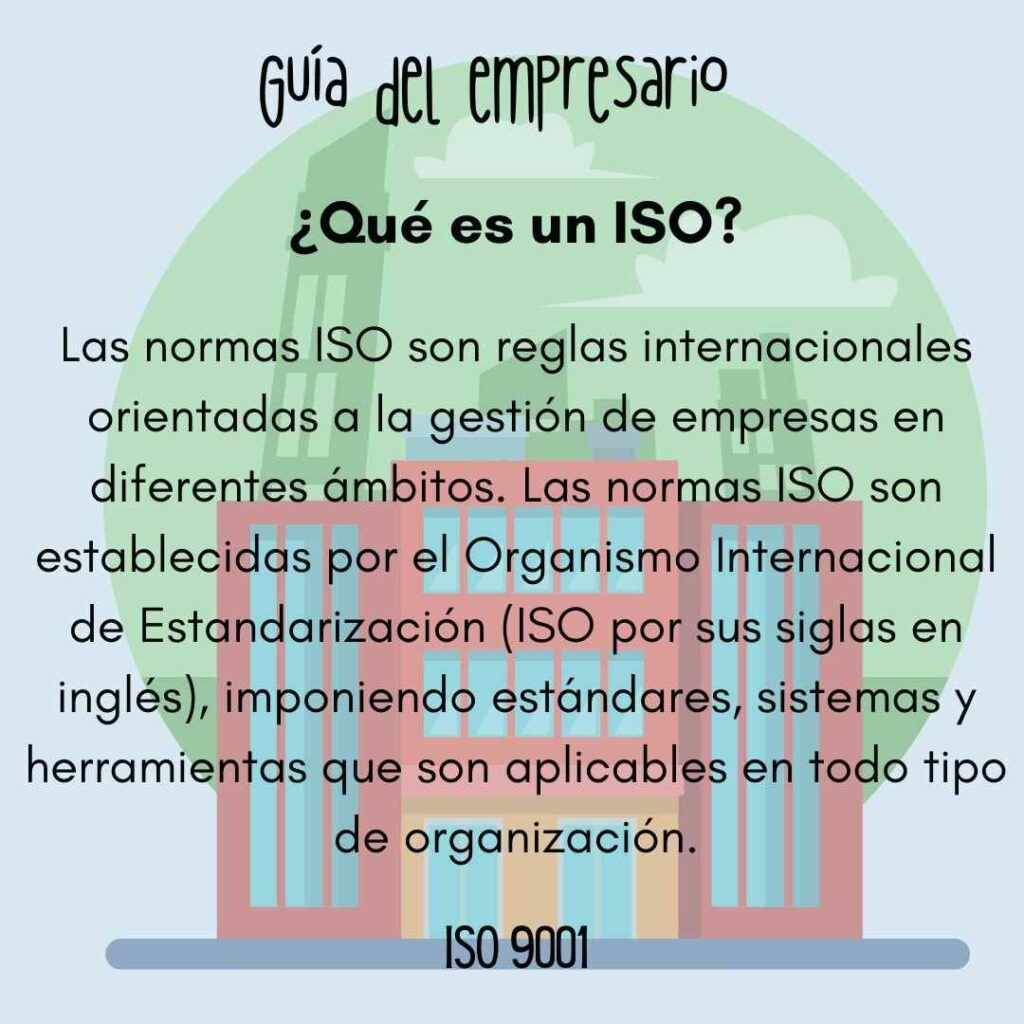
1. What is ISO 9001?
🔍 En este artículo vamos a descubrir qué es la norma ISO 9001 y por qué es importante para las organizaciones que desean ofrecer productos y servicios de calidad.
La norma ISO 9001 es un estándar internacional de gestión de calidad reconocido en todo el mundo. Fue desarrollada por la Organización Internacional de Normalización (ISO) y establece los requisitos para implementar un sistema de gestión de calidad eficiente y efectivo.
🌎 Esta norma se aplica a una amplia gama de organizaciones, ya sean empresas grandes o pequeñas, en cualquier sector o industria. Al obtener la certificación ISO 9001, una organización demuestra su compromiso con la excelencia en la calidad y su capacidad para satisfacer consistentemente las necesidades y expectativas de sus clientes. Además, permite a las empresas mejorar continuamente sus procesos y garantizar la conformidad con los requisitos legales y reglamentarios aplicables.
📊 Los beneficios de implementar la norma ISO 9001 son numerosos. Entre ellos se encuentra el aumento de la eficiencia operativa, la reducción de los costos y la mejora de la satisfacción del cliente. Al seguir las directrices de esta norma, las organizaciones pueden identificar y corregir los problemas antes de que afecten a la calidad de sus productos o servicios, lo que a su vez ayuda a construir una reputación sólida y a conquistar nuevos mercados.
📚 En resumen, la norma ISO 9001 es una herramienta fundamental para la mejora de la calidad en las organizaciones. Su implementación permite establecer procesos eficientes, satisfacer las necesidades del cliente y obtener ventajas competitivas en el mercado. Si deseas conocer más sobre esta norma internacional y lograr el éxito en tu empresa, ¡sigue leyendo nuestros próximos artículos!
2. Benefits of Implementing ISO 9001
😊
Implementing ISO 9001 brings numerous benefits to organizations of all sizes and industries. In this blog post, we will explore four key advantages that result from adopting this internationally recognized quality management standard.
1. Improved Efficiency and Productivity
ISO 9001 promotes a systematic approach to managing processes within an organization. By implementing this standard, companies can streamline their operations, identify and eliminate inefficiencies, and optimize resource allocation. This leads to improved productivity and a more efficient use of time and resources.
2. Enhanced Customer Satisfaction
ISO 9001 places a strong emphasis on customer focus and satisfaction. Organizations that adhere to this standard are committed to meeting customer requirements and delivering high-quality products and services. This commitment results in increased customer satisfaction, loyalty, and trust. Meeting customer expectations becomes a top priority, leading to improved customer relationships and a positive brand reputation.
3. Competitive Advantage
Implementing ISO 9001 can provide organizations with a significant competitive advantage. Companies that achieve ISO 9001 certification demonstrate their commitment to delivering quality products and services. This certification becomes a powerful marketing tool, distinguishing them from competitors and enhancing their credibility in the marketplace. Additionally, ISO 9001 helps organizations continuously monitor and improve their processes, enabling them to stay ahead of the competition.
4. Higher Employee Engagement
ISO 9001 encourages employee involvement and engagement at all levels of the organization. By establishing clear roles, responsibilities, and expectations, this standard empowers employees and enhances their motivation. Employees become more aware of their impact on quality and are encouraged to contribute ideas for process improvement. This increased engagement leads to a more positive work environment, better teamwork, and higher job satisfaction.
Implementing ISO 9001 offers businesses a wide range of benefits, including improved efficiency and productivity, enhanced customer satisfaction, competitive advantage, and higher employee engagement. Stay tuned for our next blog post, where we will delve further into the ISO 9001 certification process and its implementation steps.
3. How to Obtain ISO 9001 Certification?
📝 Obtaining ISO 9001 certification is a significant milestone for any organization looking to establish its commitment to quality management. In this blog post, we will explore the process of obtaining ISO 9001 certification and the steps involved.
Understanding ISO 9001 Certification
First and foremost, it is essential to understand what ISO 9001 certification entails. ISO 9001 is an internationally recognized standard that sets out the criteria for a quality management system. This certification demonstrates that an organization has implemented effective processes and procedures to consistently meet customer requirements and enhance customer satisfaction.
Step 1: Conduct a Gap Analysis
Before embarking on the ISO 9001 certification journey, it is crucial to conduct a gap analysis. This analysis helps identify the gaps between the organization’s existing processes and the requirements outlined in the ISO 9001 standard. By understanding these gaps, organizations can develop comprehensive plans to bridge them effectively.
Step 2: Implement Necessary Changes
Once the gap analysis is completed, the next step is to implement the necessary changes to align the organization’s processes with ISO 9001 requirements. This may involve revamping existing processes, establishing new procedures, and training employees on the updated methodologies. It is essential to involve all stakeholders and communicate the changes across the organization to ensure successful implementation.
Step 3: Internal Audit and Pre-assessment
After implementing the necessary changes, it is advisable to conduct an internal audit to assess the organization’s readiness for ISO 9001 certification. The internal audit helps identify any remaining gaps or non-conformities that need to be addressed before the certification body’s assessment. Additionally, organizations may opt for a pre-assessment by an external consultant to gain valuable insights and further improve their quality management system.
🔎 Stay tuned for the next part of this series, where we will delve deeper into the remaining steps involved in obtaining ISO 9001 certification.
- 📚💡 Descubre los principales términos y definiciones de la norma ISO 9000
- 🏆 Logra la excelencia con la ⚙️ certificación ISO 9002: Guía completa y paso a paso
- 🚫️ Las desventajas de la norma ISO 9000: ¿Cómo afecta a tu empresa?
- 🌟 ¡Descubre todo sobre la ISO 9001 última versión 2018! ¿Qué cambios trae?
- 🏆 ¿Por qué las 🏢 Empresas con Certificación ISO 9001:2008 son sinónimo de éxito?
4. Common Misconceptions about ISO 9001
😕
In this article, we will debunk some of the most common misconceptions about ISO 9001, a widely recognized international standard for quality management systems. It is essential to address these misconceptions to ensure a better understanding and implementation of ISO 9001 within organizations.
One common misconception is that ISO 9001 certification guarantees product quality. While ISO 9001 provides a framework for implementing quality management systems, it does not directly guarantee the quality of products or services. It is up to the organization to effectively implement the standard and ensure quality throughout their processes.
Another misconception is that ISO 9001 is only for large organizations. In reality, ISO 9001 is applicable to organizations of all sizes and industries. The standard can be customized to suit the specific needs and requirements of any organization, regardless of its size or sector.
Many people also believe that ISO 9001 is all about paperwork and documentation. While documentation is an essential element of ISO 9001, it does not mean drowning in unnecessary paperwork. The standard emphasizes the importance of documenting processes, but it also encourages organizations to focus on results and continuous improvement.
Some individuals think that ISO 9001 is a one-time achievement. However, ISO 9001 is a continuous process that requires ongoing commitment and effort. It is not just about achieving certification but maintaining it through regular audits, reviews, and improvements to ensure compliance with the standard.
Lastly, there is a misconception that ISO 9001 implementation is costly and time-consuming. While there may be initial costs and time investments involved, implementing ISO 9001 can bring long-term benefits to organizations. Improved efficiency, customer satisfaction, and enhanced credibility are just a few of the many advantages that can outweigh the initial investment.
Addressing these common misconceptions surrounding ISO 9001 is crucial in fostering a better understanding of the standard and its benefits. Organizations should focus on the practical implementation of ISO 9001, rather than getting caught up in misunderstandings that can hinder their progress towards quality excellence.
5. Successful Case Studies of ISO 9001 Implementation
✨ Successful Case Studies of ISO 9001 Implementation ✨
If you are considering implementing ISO 9001 in your organization, it’s always helpful to learn from successful case studies. By understanding how others have achieved success, you can gain insights and inspiration for your own implementation process. In this article, we will explore five remarkable case studies of ISO 9001 implementation, highlighting their strategies, challenges, and outcomes.
⭐ Company A: A medium-sized manufacturing company embarked on an ISO 9001 journey to improve their quality management system. By streamlining their processes and enhancing their customer focus, they achieved an impressive boost in productivity and customer satisfaction. Implementing ISO 9001 provided a framework for continuous improvement, leading to a significant increase in overall efficiency.
⭐ Company B: A service-oriented organization embraced ISO 9001 to enhance their operational efficiency and customer service. Through extensive employee training and strategic process improvements, they successfully reduced response times and enhanced the overall customer experience. The implementation of ISO 9001 also allowed them to establish a culture of quality, resulting in increased employee engagement and improved teamwork.
⭐ Company C: A global technology company recognized the need for a standardized approach to quality management. With ISO 9001, they were able to centralize their operations across multiple locations, ensuring consistency and alignment throughout the organization. The implementation of ISO 9001 not only improved their quality control processes but also strengthened their reputation as a reliable and trustworthy provider in the industry.
⭐ Company D: A healthcare facility implemented ISO 9001 to enhance patient safety and care quality. Through the implementation process, they identified areas for improvement, such as reducing medication errors and enhancing communication between healthcare professionals. ISO 9001 provided them with a structured framework to address these issues, resulting in improved patient outcomes and increased satisfaction rates.
⭐ Company E: A government agency recognized the importance of accountability and transparency in its operations. They adopted ISO 9001 to establish clear quality objectives and performance measures. Through the implementation process, they were able to streamline their processes, reduce costs, and improve decision-making capabilities. ISO 9001 also played a crucial role in enhancing public trust and confidence in the agency’s services.
These case studies highlight the diverse ways in which organizations have successfully implemented ISO 9001 to drive positive change. Whether you are in manufacturing, service, technology, healthcare, or government, the principles of ISO 9001 can be tailored to your organization’s needs. By learning from these success stories, you can gain valuable insights that will guide you towards a successful ISO 9001 implementation in your own organization.
6. Tips for Maintaining ISO 9001 Compliance
🔍 [SEO] Tips for Maintaining ISO 9001 Compliance: Boosting Quality Management
ISO 9001 compliance plays a crucial role in ensuring efficient quality management systems. To help your organization maintain compliance with this internationally recognized standard, we have compiled six invaluable tips. Adhering to these practices will not only guarantee the continued effectiveness of your quality management system but also enable your business to stay competitive in today’s global market.
1. Establish a Robust Documentation System
✍️ Effective documentation is the foundation of ISO 9001 compliance. Implement a comprehensive documentation system that includes clear policies, procedures, and work instructions. Ensure that this system is regularly reviewed and updated to reflect any changes in processes or regulations. Proper documentation will not only guide employees in their duties but also serve as evidence of compliance during audits.
2. Conduct Regular Internal Audits
🔍 Internal audits are essential for proactive identification of non-conformities within your quality management system. Regularly schedule and conduct audits to assess compliance with ISO 9001 requirements. These audits provide an opportunity to identify areas for improvement and rectify any deviations from standard procedures. Documenting audit findings and implementing corrective actions will reinforce compliance and drive continuous improvement.
3. Provide Adequate Training and Education
📚 Invest in training programs to ensure that employees understand the importance of ISO 9001 compliance and their roles in maintaining it. Offer comprehensive training sessions at regular intervals and make ongoing education a part of your organizational culture. Employees equipped with the necessary knowledge and skills will be empowered to meet quality objectives and contribute to the overall success of your business.
4. Foster a Culture of Continuous Improvement
🔄 Encourage a mindset of continuous improvement within your organization. Implement a structured improvement process, such as a formal corrective and preventive action system, to address non-conformities and prevent recurrence. Engage employees in identifying opportunities for improvement and recognizing their contributions. Regularly review performance metrics to assess progress towards key quality objectives and implement necessary actions accordingly.
By following these tips, your organization can ensure ongoing ISO 9001 compliance and strengthen its quality management system. Embracing these practices will not only help you satisfy customer expectations but also drive operational excellence and promote a culture of continuous improvement.
As a business striving to achieve ISO 9001 compliance, it is crucial to remember that maintaining this standard requires consistent effort and commitment from all levels of your organization.
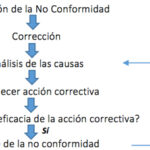 🔧✅ Gestion de no conformidades ISO 9001: Cómo optimizar la calidad y cumplir con los estándares de manera efectiva
🔧✅ Gestion de no conformidades ISO 9001: Cómo optimizar la calidad y cumplir con los estándares de manera efectiva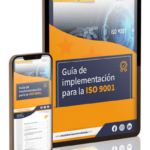 📚🔥 Guía completa de la norma ISO 9001 de 🏆Ibnorca: Descarga el PDF ahora!
📚🔥 Guía completa de la norma ISO 9001 de 🏆Ibnorca: Descarga el PDF ahora! 📋 Guía completa de implementación ISO 9001:2015: Consejos y mejores prácticas
📋 Guía completa de implementación ISO 9001:2015: Consejos y mejores prácticas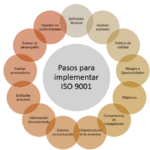 🏆 ¡Mejora tu calidad con la implementación de la norma ISO 9001! 🌟
🏆 ¡Mejora tu calidad con la implementación de la norma ISO 9001! 🌟 🏢💡Guía completa para la Implementación SGC ISO 9001: ¡Mejora la calidad de tu empresa con éxito!
🏢💡Guía completa para la Implementación SGC ISO 9001: ¡Mejora la calidad de tu empresa con éxito! 🔍 Guía completa de implementación de la norma ISO 9001 en una empresa PDF: ¡mejora tu sistema de gestión de calidad!
🔍 Guía completa de implementación de la norma ISO 9001 en una empresa PDF: ¡mejora tu sistema de gestión de calidad!![🚀 Guía completa para implementar ISO 9001:2015 paso a paso 📝 [PDF descargable]](https://www.ayudasiso9000.com/wp-content/uploads/2023/11/f09f9a80-guia-completa-para-implementar-iso-90012015-paso-a-paso-f09f939d-pdf-descargable-150x150.png) 🚀 Guía completa para implementar ISO 9001:2015 paso a paso 📝 [PDF descargable]
🚀 Guía completa para implementar ISO 9001:2015 paso a paso 📝 [PDF descargable]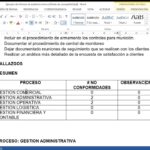 📊🔎 Obtén el Mejor Informe de Auditoría ISO 9001:2015 PDF ➡️ Descárgalo Ahora!
📊🔎 Obtén el Mejor Informe de Auditoría ISO 9001:2015 PDF ➡️ Descárgalo Ahora!